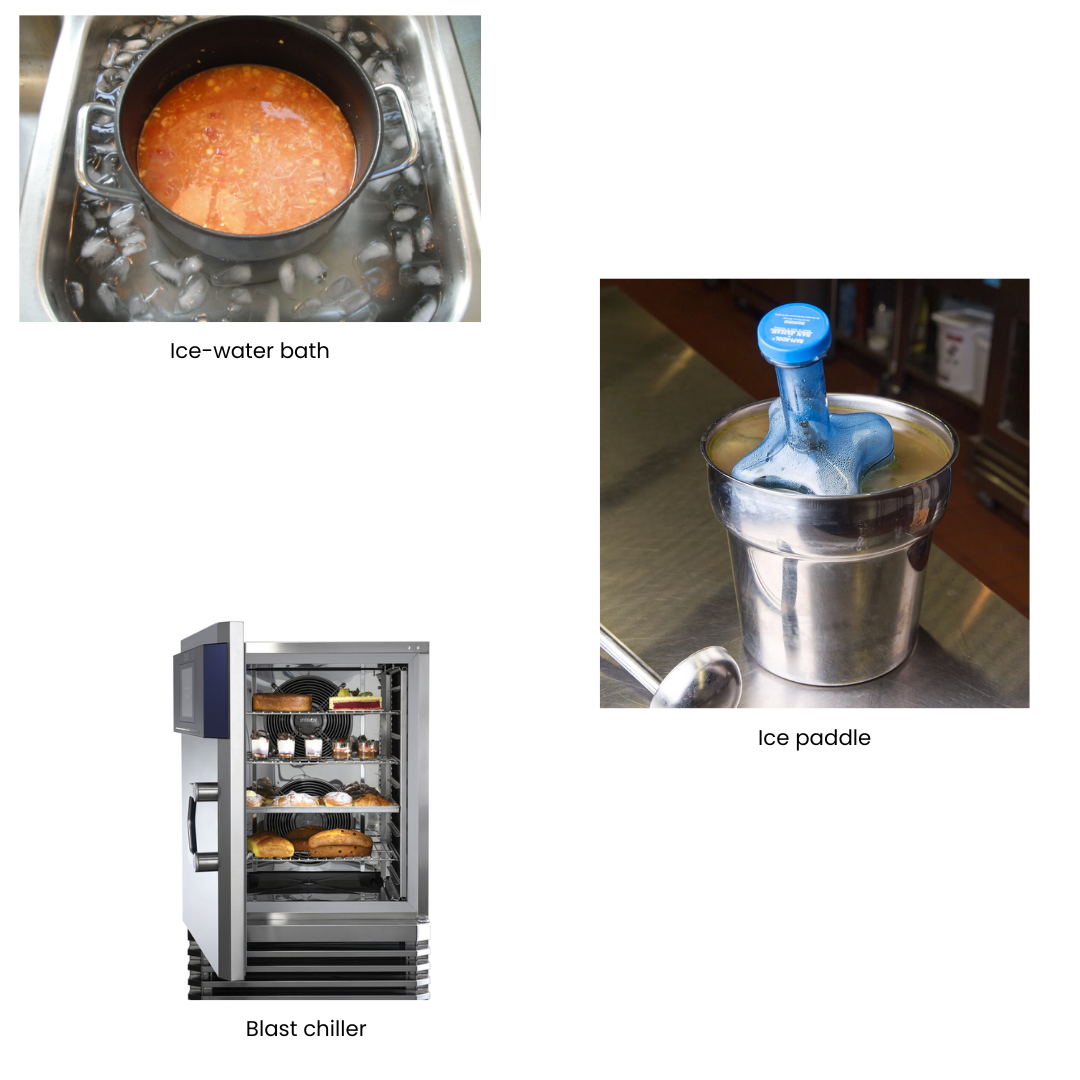48 8.5: Cooling and Reheating Food
8.5 Cooling and Reheating Food
Oftentimes, all food isn’t served or sold at the end of service. Food can be saved and used for later service by following the procedures for cooling food properly. To cool foods they must pass through the temperature danger zone as quickly as possible to prevent pathogen growth.
Food must also be reheated correctly to remain safe. There are specific guidelines that must be followed to ensure leftover food is safe for reuse and doesn’t expose diners to harmful pathogens.
Cooling TCS Foods
Food is especially vulnerable to rapid pathogen growth when it is between 125° F ( 52°C) and 70 ° F ( 21 °C). It is important that food passes rapidly through this part of the temperature danger zone. Cool from 135°F (57°C) to 70°F(21°C) within 2 hours. From there food has an additional 4 hours to cool from 70°F(21°C) to 41°F (5°C). This allows for a cooling window of 6 hours total.
Other factors that affect the rate at which food cools include its density or thickness, size, and the storage container it’s in. To facilitate faster cooling:
Cut down large food items into smaller sized pieces
Move food items from plastic storage containers to stainless steel containers
Use multiple shallow containers for liquids
Coolers should not be relied on to cool hot foods. They are not designed to pass food through the danger zone quick enough. Coolers can be used to chill food down further to get to 41°F (5°C) once it has reached 70°F(21°C). Warm foods needing to continue cooling should be stored loosely covered.
Additional methods for cooling include the use of ice-water baths, ice paddles, blast chillers, and using ice or cold water as an ingredient.
Ice baths are useful in cooling small containers of food quickly. For this method, fill a clean sink or other vessel with ice and water and place the containers in the ice water. Stir the food frequently to facilitate even cooling.
Ice paddles are paddles made of food safe plastic that when filled with ice or frozen water can be placed in food storage containers to help food cool quickly.
A blast chiller is a specialty piece of kitchen equipment which circulates cold air around food at a fast pace to facilitate cooling. They often include probes that can be inserted into the food so that the cooling can be monitored from the outside door temperature read-out.
Lastly, food cooling can be achieved by adding ice or cold water directly to a dish. The recipe amount of water is reduced to allow for the melted ice or cold water to become part of the food’s ingredients and to help cool food quicker.

Reheating Food
The guidelines for reheating food vary based on the intended use of the food item. Food that is reheated for immediate service can be heated to any temperature as long as it was cooked and cooled properly.
TCS food that is reheated to be hot-held must be heated to 165°F (74°C) for 15 seconds. Additionally, the food must reach this temperature within 2 hours from the beginning of the reheating process. This standard is used for any method of reheating including microwave, stovetop, and oven.
Food that becomes unsafe should be discarded, unless it can be safely reconditioned. Reconditioning allows a food to return to a safe status. To be reconditioned, food must not spend more than 2 hours in the temperature danger zone. The food should be heated or cooled as quickly as possible to its recommended minimum internal temperature.
